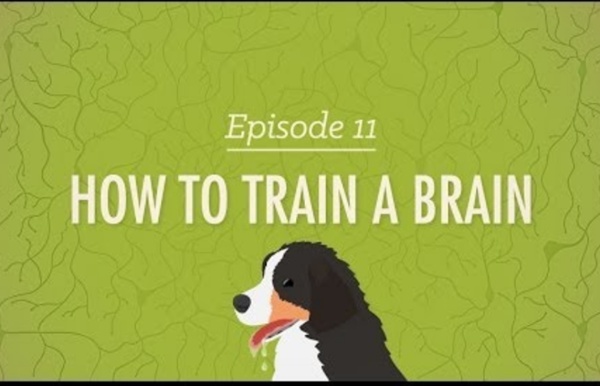



http://www.youtube.com/watch?v=qG2SwE_6uVM
Related: (Psy 108) Reinforcement and punishment that could be applied to promote road safety • Striving for Safer Roads with Reinforcement and Punishment • yazhni • A comprehensive guide to getting the best out of your teenagerOperant Conditioning How Reinforcement and Punishment Modify Behavior Operant conditioning, also known as instrumental conditioning, is a method of learning normally attributed to B.F. Skinner, where the consequences of a response determine the probability of it being repeated. Through operant conditioning behavior which is reinforced (rewarded) will likely be repeated, and behavior which is punished will occur less frequently. By the 1920s, John B. Watson had left academic psychology, and other behaviorists were becoming influential, proposing new forms of learning other than classical conditioning.
The Study of Punishment in Psychology Punishment is a term used in operant conditioning to refer to any change that occurs after a behavior that reduces the likelihood that that behavior will occur again in the future. While positive and negative reinforcements are used to increase behaviors, punishment is focused on reducing or eliminating unwanted behaviors. Punishment is often mistakenly confused with negative reinforcement. The difference: Reinforcement increases the chances that a behavior will occur and punishment decreases the chances that a behavior will occur.
Parenting Children with Positive Reinforcement (Examples + Charts) Children don’t come with instructions and discipline is often experienced by parents and children alike as an arena where our will and wits are tested. Positive reinforcement is only one of many forms of discipline, but from the perspective of positive psychology, it may as well be the most important one as it focuses on amplifying what is already good in our children and in ourselves as their caretakers. Positive reinforcement as a form of positive discipline allows us to tap into our children’s individual strengths, draw attention to their personality traits and interests, and as a result give us an opportunity to connect, communicate effectively, and ultimately empower them to be more of themselves. Before you read on, we thought you might like to download our 3 Positive Psychology Exercises for free.
Facts About Corporal Punishment Corporal punishment is a hot topic that is widely debated by parenting experts, psychologists, and parents. Fueled by news stories about child abuse, many of those opposed to corporal punishment question whether or not it should remain legal and what steps could be taken to reduce incidents of physical abuse to children. Overview Corporal punishment encompasses all types of physical punishment, including spanking, slapping, pinching, pulling, twisting, and hitting with an object.
(Positive Punishment and Negative reinforcement examples) 12 Examples of Positive Punishment & Negative Reinforcement You might be thinking that “positive punishment” sounds like an oxymoron, after all, how can punishment be positive? Not many people “like” punishment, right? The disconnect in understanding this concept comes from the usage of the word “positive;” here at PositivePsychology.com, we generally use the term “positive” to refer to things that are inherently good, things that are life-giving, and things that promote thriving and flourishing.
What Is Reinforcement in Operant Conditioning? One of the many different ways in which people can learn is through a process known as operant conditioning (also known as instrumental conditioning).1 This involves learning through reinforcement or punishment. The type of reinforcement used can play an important role in how quickly a behavior is learned and the overall strength of the resulting response. Understanding Reinforcement Reinforcement is a term used in operant conditioning to refer to anything that increases the likelihood that a response will occur. Psychologist B.F.
Positive Reinforcement and Operant Conditioning In operant conditioning, positive reinforcement involves the addition of a reinforcing stimulus following a behavior that makes it more likely that the behavior will occur again in the future. When a favorable outcome, event, or reward occurs after an action, that particular response or behavior will be strengthened. One of the easiest ways to remember positive reinforcement is to think of it as something being added. 4 Negative Reinforcement Examples Contrary to its name, negative reinforcement isn't a bad thing. Rather than introducing something negative to deter bad behaviour (otherwise known as punishment), this theory of parenting removes something negative to encourage good behaviour. It's easier to understand when you see some negative reinforcement examples.
This Crash Course video explores the various theories presented by American Psychologist, B.F. Skinner's Classical Conditioning, Ivan Petrovich Pavlov's theory of Associative Learning, John B. Watson's Classical Conditioning. Reinforcing is played specifically at: 07:18:22 by harrysuhaimi Sep 23
Positive and Negative Reinforcement 07:18:22 by huanruhan Sep 19